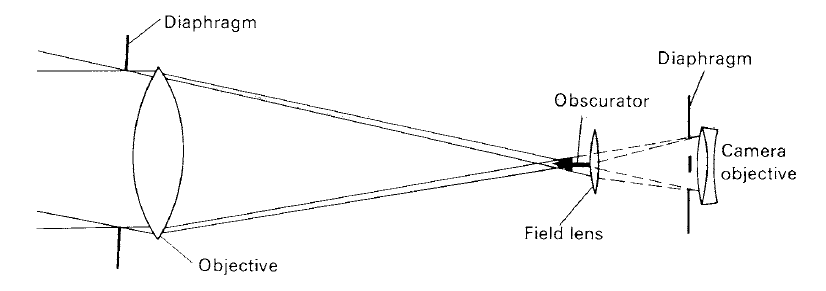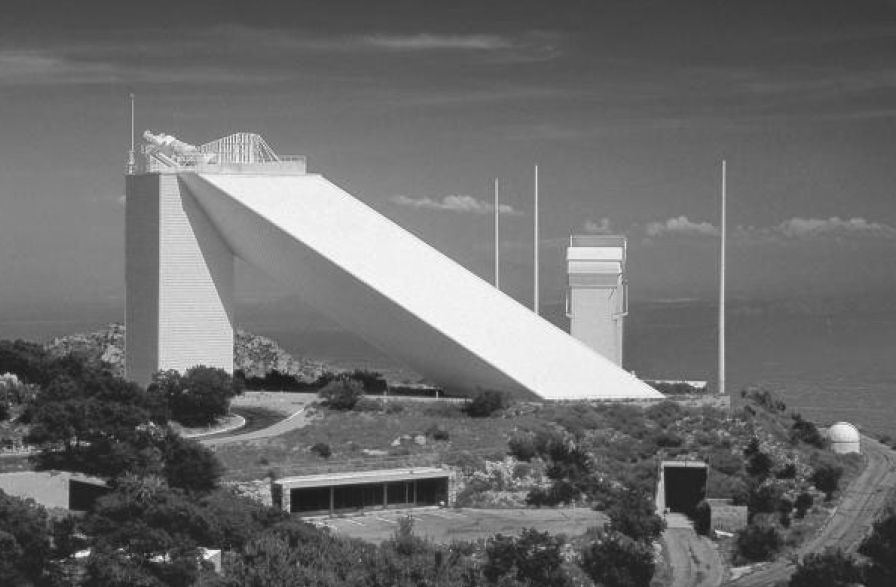


 الفيزياء الكلاسيكية
الفيزياء الكلاسيكية
 الكهربائية والمغناطيسية
الكهربائية والمغناطيسية
 علم البصريات
علم البصريات
 الفيزياء الحديثة
الفيزياء الحديثة
 النظرية النسبية
النظرية النسبية
 الفيزياء النووية
الفيزياء النووية
 فيزياء الحالة الصلبة
فيزياء الحالة الصلبة
 الليزر
الليزر
 علم الفلك
علم الفلك
 المجموعة الشمسية
المجموعة الشمسية
 الطاقة البديلة
الطاقة البديلة
 الفيزياء والعلوم الأخرى
الفيزياء والعلوم الأخرى
 مواضيع عامة في الفيزياء
مواضيع عامة في الفيزياء|
Read More
Date: 20-7-2020
Date: 31-8-2020
Date: 24-8-2020
|
The coronagraph
Until the invention of the coronagraph, the Sun’s corona could only be seen on the occasion of a total eclipse of the Sun. The brightness of the corona is generally much less than the brightness of the daytime sky which surrounds the Sun. However, by choosing a good observing site at a height in the mountains, the amount of scattered light seen round the Sun is reduced and the chances of observing the corona are greatly improved.
An ordinary telescope gives rise to scattering in the optical system and this would again prevent the corona being seen. A specially designed instrument, called a coronagraph, has been developed which provides an obscurator for the solar disc and keeps any scattered light down to a minimum. The essential parts of a coronagraph are depicted in figure 1.

Figure 1. A schematic representation of a coronagraph.
The objective is a single-element lens, specially chosen for its freedom from blemishes such as air-bubbles and scratches which give rise to scattering. A metal cone is fixed to the field lens so that the Sun’s disc is obscured and its light reflected out of the optical path. A diaphragm with a small central obscurator is placed prior to the camera objective to eliminate light which is diffracted by the coronagraph objective. Although the camera lens can provide correction for the chromatic aberration which is produced by the single element objective, the obscurator, in any one position, is effective only for a narrow band of wavelengths. This is not too much of a disadvantage as narrow-band filters are frequently applied in coronal measurements. Use of the instrument over a range of wavelengths is achieved by adjusting the position of the obscurator.
With the aid of the coronagraph, a much longer observation time is made available than at an

Figure 2. The McMath Pierce solar telescope, Kitt Peak National Observatory, Arizona. (NOAO/ AURA/NSF.)
eclipse, enabling faint coronal spectral lines to be investigated and providing a means for recording the development of solar prominences by time-lapse photography.



|
|
|
|
التوتر والسرطان.. علماء يحذرون من "صلة خطيرة"
|
|
|
|
|
|
|
مرآة السيارة: مدى دقة عكسها للصورة الصحيحة
|
|
|
|
|
|
|
نحو شراكة وطنية متكاملة.. الأمين العام للعتبة الحسينية يبحث مع وكيل وزارة الخارجية آفاق التعاون المؤسسي
|
|
|